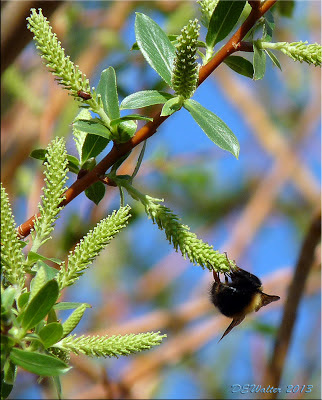 |
| Banasa dimidiata (Say, 1823) reflecting on spring in Edmonton |
I'm not sure what Carl Stål was thinking of when he coined the stink bug genus Banasa in 1860. In those days, scientific names often had a classical inference and there once was a classical Banasa. The Roman Emperor Augustus founded a colony in northern Africa for veterans of the Battle of Actium called Colonia Iulia Valentia Banasa ( 'The Colony Julia Valentia of Banasa'). Although long a ruin, Banasa is fairly well known for its relics, and perhaps its bugs. The word also occurs in a Rajasthani folk Song (Raste - Raste Chalti Banasa) that adorns YouTube with brightly dressed songsters. Alas, Google Translator seems ignorant of Rajasthani, so the meaning of that banasa also remains a colourful mystery.
 |
| Banasa dimidiata looking very ruddy on a cold spring morning, and not much like its emended name |
Perhaps Professor Stål was not as dour as his official portrait appears and had a fondness for colourful folk songs from warmer parts of the world. On the other hand, Anasa Amyot & Serville, 1843, perhaps best known for the Squash Bug Anasa tristis (De Geer 1773), seems to have been coined in a similar vein . Perhaps the good professor was being economical in an alphabetical way, but Google could find no 'Canasa' or 'Danasa' to support that hypothesis.
 |
| A more typical colour morph of Banasa dimidiata |
Thomas Say's choice of a species name for our bug is also a bit mysterious. The spelling, as printed, was 'dimiata', a word with no obvious meaning. In general, the original spelling published is the name you are stuck with, but some people like to correct what they see as the mistakes of others. The great American coleopterist John Lawrence LeConte made such an emendation in 1859 when he published the complete writings of Thomas Say. Presumably LeConte thought Say meant 'dimidiatus', a word meaning 'halved', as many forms of this stink bug are half one colour and half another, especially on the pronotum. Well, perhaps, but I think I will go with 'prevailing use' as opposed to original spelling in this case as Richard Hoffman (2005) suggests. This multi-coloured bug is confusing enough without quibbling about its name.
References
Richard L. Hoffman. 2005. The Virginia Species of Banasa, Three Decades Later
(Heteroptera: Pentatomidae). Banisteria
25: 41-44.
Katherine Kamminga, D. Ames Herbert, Jr., Sean Malone, Thomas P. Kuhar (all Virginia Tech) & Jeremy Greene (Clemson University). Field Guide to Stink Bugs of Agricultural Importance in the Upper Southern Region and Mid-Atlantic States. http://pubs.ext.vt.edu/444/444-356/444-356_pdf.pdf
LeConte, J. L. 1859. The Complete Writings of Thomas
Say on the Entomology of North America. Two volumes
Bailliere Brothers, New York 412 and 814 pp.
D. B. Thomas & T. R. Yonke. 1981. A Review
of the Nearctic Species of the Genus Banasa
Stål (Hemiptera: Pentatomidae). Journal of the Kansas Entomological Society 54:
233-248.

 |
| This spring's first tulip |



















